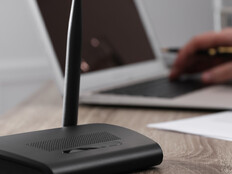On a typical day, 5,500 to 7,000 passengers depart and arrive at SDF. But the airport authority’s IT department and its consultants designed the new wireless network to handle up to four times that number to accommodate its busiest day of the year, which is the Sunday after the Kentucky Derby, Prince says. In 2019, 28,000 passengers flew in and out of SDF the day after the race.
To manage the Wi-Fi, Prince installed two new Cisco Catalyst 9800 Series wireless controllers for redundancy.
To protect internal applications and data, passengers and business guests of the airport authority will use the wireless in two separate service set identifiers that don’t touch the IT infrastructure. “It will be locked down and segregated for direct internet access,” Prince says.
To provide the best customer service, the public Wi-Fi network is on its own dedicated internet feed: a 2Gbps circuit. The wireless network, which was expected to go live in late 2021, will also remain free and unlimited.
RELATED: How are city and state governments expanding Wi-Fi access?
Tamp Airport Gets Access to Speedy New 5G Services
Tampa International Airport not only offers free, high-performance Wi-Fi but in late 2020 it also became the first airport in the country to offer mmWave 5G cellular service from the three major cellular carriers, including AT&T, airport officials say.
In 2018, airport officials decided to install a distributed antenna system to improve cellular service. Previously, the airport relied on surrounding carrier tower networks, but that didn’t provide enough coverage and capacity, says Marcus Session, TPA’s vice president of IT services.
TPA worked with a communications infrastructure provider that built the DAS by installing 800 5G and 4G antennas and running about 50 miles of fiber and copper cables throughout the airport campus. Now, the three major cellular carriers have connected to it to provide significantly improved cellular service, Session says.












